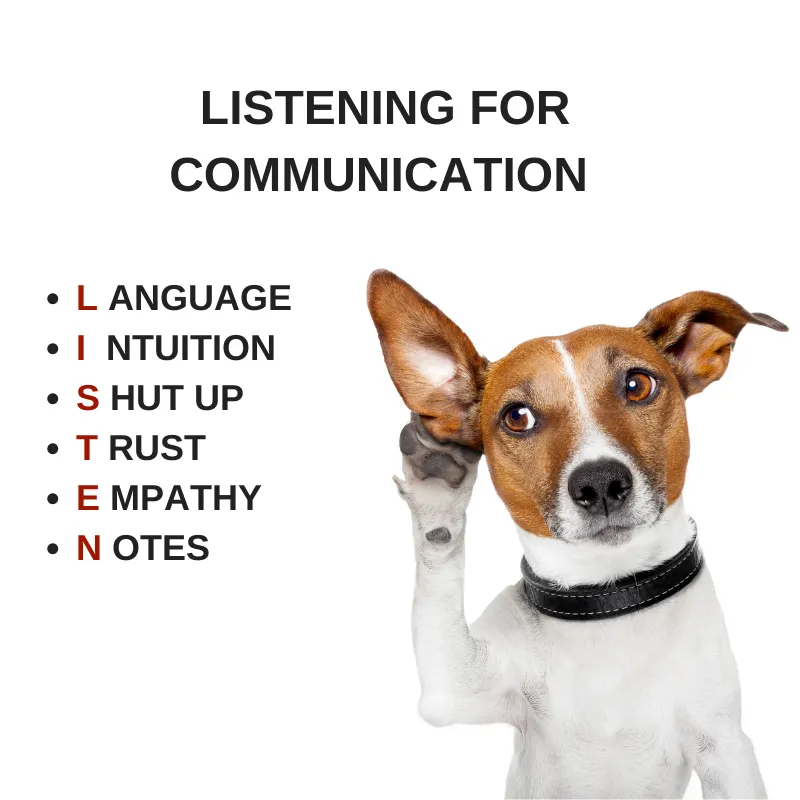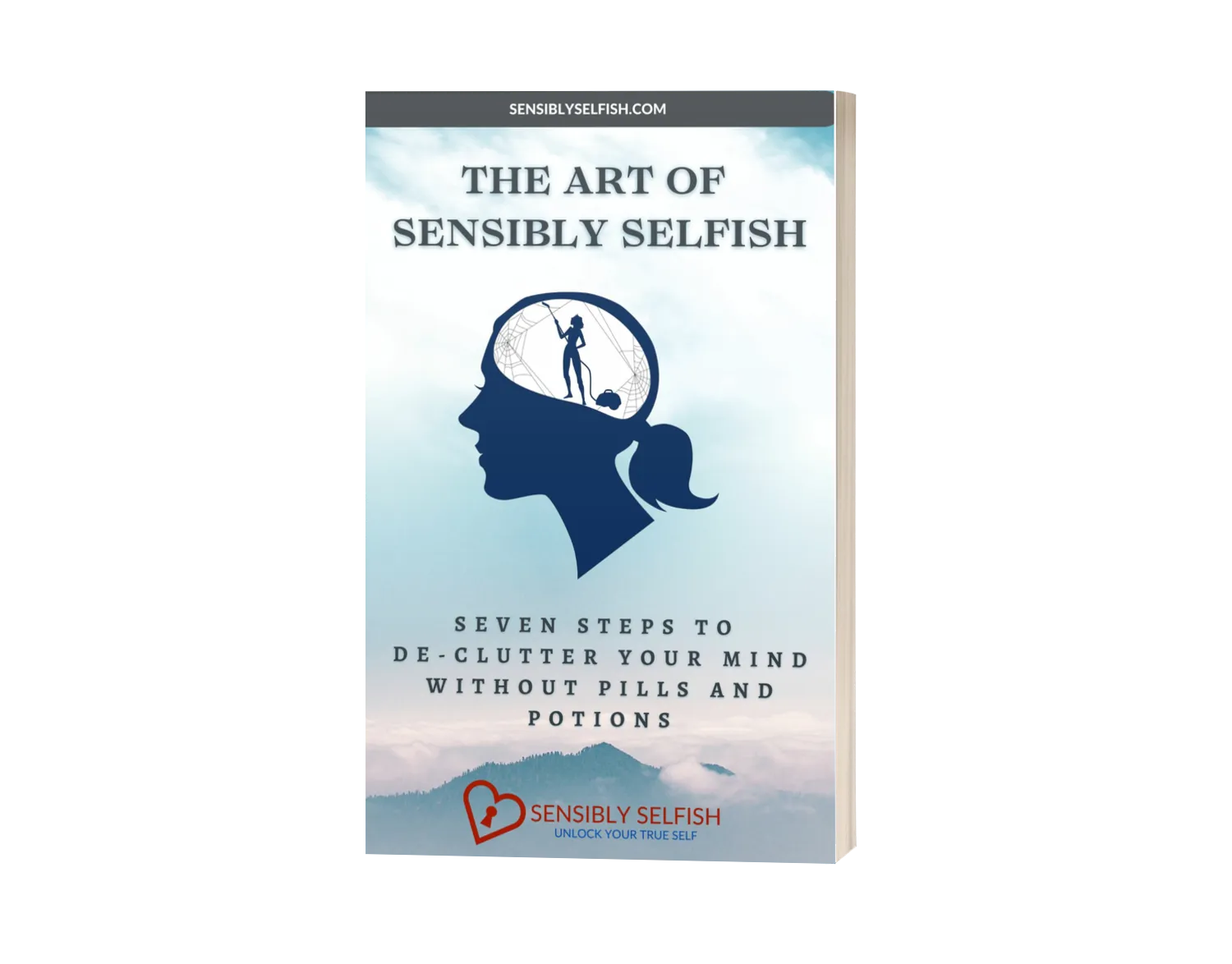The Path to Effective Communication
Six Secrets of Attentive Listening
[Toc]

Your Ear Power
Mastering the art of listening is not only a valuable skill but a foundational pillar of success in our interconnected world. In a society often consumed by noise and distractions, those who possess the power to listen stand out. These people forge deeper connections, influence outcomes, and foster harmonious relationships.
This post explores the transformative potential of effective listening. It delves into the profound impact listening has on personal lives, professional endeavors, and overall well-being. By honing this fundamental skill, you can unlock opportunities and position yourself as a respected person in any domain.
When we fail or pretend to listen, we waste universal time and cause pain. It leads to misunderstandings that never needed to exist in the first place. Yet, all humans have committed the crime of failing to listen at one time or another (more often than we like to admit).
Use this post to revolutionize your communication prowess and elevate your presence in an ever-evolving landscape where the power of listening reigns supreme. We have two ears and one mouth for a reason.
Below are six steps for Effective Listening. Each has equal importance. Use each in conjunction with the next. Listening takes time and practice, so be prepared to work at it.
Before you begin, take a few deep breaths, clear your mind, and use your whole body to listen. This post will use the Acronym L-I-S-T-E-N to guide you through the process.

L- Language
In any conversation, effective communication goes beyond mere words exchanged between individuals. Most communication transpires through non-verbal cues; body language, vocal tone, pacing, and even the moments of silence that permeate the conversation. These silent intervals hold immense power, allowing both participants to delve deeper into their thoughts and fostering a space where unspoken words can be heard.
A skilled listener creates an environment that encourages open dialogue. Start by being mindful of your body language. Ensure that it conveys openness and receptiveness. A warm smile and deep breaths can set the tone for freedom of expression.
It's worth noting that direct eye contact tends to be preferred by women, while men may appreciate a balance between direct and indirect eye contact, depending on the context. Remember to relax and avoid crossing your arms, as these gestures can inadvertently signal defensiveness or disinterest. Maintain a neutral facial expression, consciously monitoring your responses to the conversation.
If this topic interests you, delve deeper into the nuances of non-verbal cues such as facial expressions, gestures, and tone of voice. Also, recognizing and respecting cultural differences in communication styles and norms can enhance cross-cultural listening, ensuring inclusivity and avoiding misunderstandings. Comprehensive knowledge creates understanding.
Non-verbal cues extend beyond body language; synchronization of breathing can also play a role in building trust and establishing rapport. Aligning your breathing can create a sense of connection and empathy. Moreover, you can utilize your breathing patterns as a guide, gently leading the person into a different emotional state. For instance, if they are upset and breathing rapidly, adopting slow and deep breaths yourself can naturally facilitate a shift in their emotional state.

I - Intuition
When in conversation, it is not uncommon to experience intuitive nudges or gut feelings that beckon us toward a deeper level of connection. These subtle nuances and signals should never be underestimated. They often hold the key to unlocking profound insights and fostering meaningful dialogue. Trusting your intuition empowers you to speak up and share these valuable intuitions, enriching the conversation with fresh perspectives and unexplored dimensions.
If you find yourself experiencing intuitive prompting, even if it seems unconventional or unconventional, it is crucial to trust yourself and give voice to your thoughts. You can begin by prefacing your statement with phrases like, 'I know this sounds strange, but I have a strong gut feeling I believe is worth sharing. Are you open to hearing it?' Alternatively, you can humbly acknowledge the potential for error by saying, 'I could be wrong about this, but...' By expressing your intuition with humility and openness, you create an environment where innovative ideas and insights can be uncovered.
By harnessing the power of intuition in your conversations, you cultivate a sense of confidence within yourself and the dialogue itself. As you listen attentively to your intuitive cues, expect the conversation to flow with inspiration and genuine interest. These heart-led exchanges transcend the limitations of mere words and find contentment within the silence. Through intuitive listening, you tap into a realm of understanding that surpasses the superficial, allowing profound connections and transformative conversations to unfold.

Case Study: Christine's Journey to Effective Listening
Christine has constant worry, believing that her husband wants a divorce. Their conversations have become tense, filled with misunderstandings and escalating emotions. Sensing the need for change, Christine realizes that she must hone her listening skills to save their relationship.
Through self-reflection, Christine acknowledges her tendency to jump to conclusions and make assumptions. She commits to practicing listening, focusing on truly understanding her husband's perspective. Instead of preemptively defending herself or interrupting, Christine learns to create a space for open dialogue, allowing her husband to express his thoughts and emotions freely.
By listening without judgment, Christine discovers nuances and underlying concerns she had previously missed. She can engage in empathetic listening and seek to understand her husband's needs and desires. With patience and a genuine desire to reconnect, Christine gradually rebuilds trust, fostering a safe environment for honest communication.
Through her dedication to effective listening, Christine and her husband embark on a journey of mutual understanding and healing. Their renewed connection becomes a testament to the transformative power of listening and the importance of setting aside preconceptions.

S - Shut UP!
Amid a conversation, it is all too common for the impulse to interrupt and interject with our version of the story to arise. This inclination reflects the presence of our ego or the fear of forgetting our thoughts. However, when we consciously silence ourselves and allow people to speak uninterrupted, we create a space where invaluable wisdom and insights can unfold. Shutting up and embracing attentive silence opens the door to profound revelations that would have otherwise remained hidden.
If you notice the urge to interrupt surfacing, take a deep breath and consciously redirect your focus towards listening more deeply. Sometimes, pausing and attuning ourselves to the speaker's words can reveal layers of understanding beyond our initial impulse to speak. Trust in the power of attentive listening and give the other person the space to express themselves fully.
In a conversation where trust has been established, both parties often develop non-verbal cues to indicate their readiness to contribute to the dialogue. These subtle body language skills can serve as signals to let the other person know that you are prepared to share your thoughts. For example, blinking at the same rate as the other person can be a way to convey engagement and receptiveness. By employing these non-verbal cues, you create a harmonious flow where each participant feels respected and valued.

T - Trust
Within the realm of conversation exists an optimal space where energy flows freely. This space creates an atmosphere of ease and openness for both participants. When a sacred ground is built upon the foundation of trust, it is fertile soil in which profound insights and authentic connections flourish. Trust enables vulnerability and unlocks hidden talents, but it is not bestowed freely; it must be earned by both parties involved.
To cultivate trust, it is essential to invest the necessary time and effort. Trust is built through remembering and demonstrating genuine care, such as recalling important details shared in previous conversations (e.g., an upcoming birthday and asking about plans). Being inclusive and actively engaging in dialogue by asking thoughtful questions fosters a sense of trust and inclusivity.
Additionally, the willingness to unlearn preconceptions, add value, and maintain credibility in your interactions contributes to trust. Confidentiality is also paramount; if asked to keep something confidential, it must remain so. Such actions reinforce respecting boundaries.
Active listening is to navigate a delicate balance of various elements. It involves attentively hearing and comprehending the words spoken, observing body language for deeper understanding, tapping into the energy created by the exchange, and cultivating a sense of comfort that encourages both participants to support each other's growth. This supportive environment includes the willingness to give and receive constructive feedback, fostering mutual growth and development.
Within this sacred space of trust, nurtured through time and genuine engagement, conversations transcend superficiality and pave the way for authentic connections and transformative insights.

E - Empathy and Explanation
Empathy and listening are intertwined, forming the foundation of meaningful and impactful communication. Through empathetic listening, we transcend hearing and enter a realm of understanding and connection.
When we attune ourselves to emotions, experiences, and perspectives, it creates a safe space for authentic expression. This fosters trust, encourages open dialogue, and deepens connections. Empathy in listening demonstrates compassion, validation, and a willingness to understand others. As we 'step into their shoes', we cultivate a more compassionate and understanding society.
Effective listening ensures a shared understanding of the words spoken. This involves active listening techniques such as paraphrasing, reflecting, and asking open-ended questions. These techniques enhance listening skills, demonstrate a genuine interest in the speaker's message, and foster comprehension.
Repeating and clarifying the information within the conversation aids in confirming mutual interpretation. Employing explanation phrases such as those below facilitates clarification and alignment.
- So what I hear you saying…
- Can you please explain that to me one more time?
- Do you mean...?
- What are your thoughts on..?
- How do you feel about..?
- What solutions do you see?
This step has the potential of monotony, awkwardness, and repetition, yet it is essential for genuine understanding and alignment. Creating an explanation or summary of the conversation before concluding is a powerful tool to eliminate presumptions. When you recap the key points and actions, shared understanding becomes solidified also, and accountability is established. This moment also allows for the confirmation of future actions, ensuring follow-through.
Insisting on explanations and summaries is not an attempt to interrupt or bully. It is a reminder of active listening's importance. By reiterating and summarizing the discussion, time is saved, misunderstandings are minimized, and mutual comprehension is prioritized.

N - Notes
Taking notes during a conversation can be a valuable tool to enhance focus and retain meaningful information for future reference. Jotting down keywords or phrases allows you to capture the essence of the conversation and provides a tangible record of the key points discussed.
However, recognize that note-taking may have different effects on individuals. For some, writing can be a means of processing and internalizing spoken words and deepening their understanding. On the other hand, it can serve as a potential distraction.
To find the optimal approach for note-taking, it's beneficial to experiment and discover a method that works best for you. Explore different techniques until you become adept at striking a balance between actively engaging in the conversation and capturing essential elements through your notes. This way, you can harness the benefits of note-taking while remaining fully present and attentive to the ongoing dialogue.
One strategy is to develop a shorthand system that allows you to quickly record ideas without interrupting the flow of the conversation. This technique enables you to capture points while minimizing the time and effort required for extensive note-taking. Additionally, consider using symbols or abbreviations that hold personal meaning to serve as memory triggers when reviewing your notes later on.

Can You L-i-s-t-e-n?
The art of effective listening holds the power to transform our interactions, relationships, and personal growth. By embracing the principles of attentive listening, we can cultivate profound connections, foster trust, and unlock hidden insights. This post has explored various aspects of authoritative listening, understanding that authority lies not in dominating conversations but in creating spaces for meaningful dialogue.
We have discovered that effective listening extends beyond mere words, encompassing body language, silence, and intuitive cues. It requires active engagement, humility, and a willingness to understand others' perspectives. Through the power of attentive silence, we allow unspoken words to be heard, and through trust, vulnerability, and shared understanding, we forge authentic connections that transcend superficiality. With your newfound listening skills, you are aware of preconceived notions, biases, distractions, and internal noise, which can help you become a more attentive listener.
Moreover, we have explored the importance of patience, note-taking, and the art of summarizing to solidify comprehension and foster accountability. By incorporating these practices into our conversations, we empower ourselves to become authoritative listeners, capable of influencing outcomes, fostering empathy, and inspiring growth.
As you venture to unlock your true self, embrace the transformative potential of effective listening in your personal and professional lives. Honor the power of genuine connection and the wisdom that emerges when you truly listen. By embodying the principles of listening, you elevate your presence and contribute to a more compassionate and understanding world, one conversation at a time.









